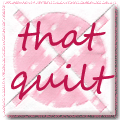First: at my last weigh in, I was down 10.8 lb, but I reckon it's closer to 12 now. I've done a few laps 'round Pinafore Park with my SIL this week, as she's joined a "Biggest Looser" competition among her colleagues. I do wish she'd get up earlier though - - it's damn HOT by the time she's ready to go!
Yesterday, Itty Bitty and I cleaned out three kitchen cupboards and took 2 boxes of dishes to the thrift store. Naturally, all the plasticware went out the door, however, it was really difficult choosing which of my glass mixing bowls I would give up! But my cupboards look very nice and tidy now....no more tossing in a dish, and slamming the door hoping it won't fall back out!
I went thrifting yesterday, and couldn't resist a completely unnecessary purchase.
I think these birds are a Canadian thing, so I expect that all my non-Canadian followers just went, "What the...?" and all my Canadian followers just went, "Ohhhhhhh yes!". These tiny little fellows were given away in boxes of Tenderleaf Tea back in the 60's, and there are 30 of them in the series I think. I already owned two -- #12 Cedar Waxwing and #17 Cardinal. Last night I was suprised to see SIX at the local Goodwill store - and purchased four of them (there were three crows, so I picked the best one): #1 Robin, #22 Crow, #23 Yellowbellied Flycatcher, #28 Red Tailed Hawk.
Then I took a look at the books, and picked out three choices that certainly speak to some of the ideas I've been mulling about this summer:
"Yoga for Women" by Shaktua Kaur Khalsa:
(From Publishers Weekly) Khalsa, an accomplished yoga practitioner and teacher, instructs the novice in dozens of basic yoga positions (asanas), breathing techniques (pranayamas) and meditations from her own "harmonious blend of Hatha and Kundalini Yoga." Although there are over 200 postures in Hatha practice, Khalsa focuses on those benefiting women's concerns, among them menstruation, breast care, pregnancy, birth and menopause. Step-by-step instructions accompanied by color photographs allow even confirmed klutzes to manage sun salutations, Downward Dog, Crow and the Wheel. Readers are also tempted with recipes for drinks such as Golden Milk, made with the Indian spice turmeric, and beauty treatments such as the Papaya Face Mask or a yogurt bath. For those who need more encouragement to stretch their limbs, Khalsa includes testimonials by women who cite the life-changing powers of yoga. After browsing through the pages of Khalsa's accessible book, even the most yoga-phobic may be inspired to take a "position."
"In Praise of Slow" by Carl Honoré:
(From Mark Frutkin ) Honoré points out that the cult of speed has been with us since the Industrial Revolution, and it's getting worse, with businesses routinely expecting 60 to 80 hours a week from workers, young children with the schedules of high-powered executives, rampant road rage, and doctors who don't have time to listen to their patients. "Boredom ... is a modern invention," the author states. "Remove all stimulation, and we fidget, panic and look for something, anything, to do to make use of the time." But Honoré is no true-believer--he questions every aspect of the Slow movement and keeps coming up with the conclusion that it just makes sense: life in the slow lane is more enjoyable, more pleasurable, more humane. This is a remarkable book that should be read by every resident of today's frenzied urban world.
"The High Price of Materialism" by Tim Kasser:
(From Publishers Weekly:) Drawing on an impressive range of statistical studies, including ones that use his own "Aspiration Index," Kasser argues that a materialistic orientation toward the world contributes to low self-esteem, depression, antisocial behavior and even a greater tendency to get "headaches, backaches, sore muscles, and sore throats." While at first the book seems to retrace the steps of Juliet B. Schor's The Overspent American and other recent titles that analyze why many Americans feel driven and unhappy despite success, Kasser goes beyond this, showing how materialistic values shape an individual's orientation toward friends, family, work, death and "internal satisfactions." Of great interest are the studies demonstrating that children of divorce and people with "less nurturing" mothers are more likely to hold strong materialistic values (though some readers may protest that children of divorce simply feel more economically vulnerable than their peers). Drawing on sources as diverse as dream analysis and game theory, Kasser powerfully argues that when we as individuals or as a nation feel more vulnerable, we exhibit more sharply defined materialistic tendencies a theme particularly resonant in this era of terrorist threats, personal debts and corporate scandals.
But this is what I'm reading now:
I bet you're wondering what it was about this book that made me pick it up. I've always been fascinated by history (and British Restoration era in particular, ever since I read "Forever Amber" when I was a (very precocious) girl, and morbidly curious about illness, medicine, and death (the ghoul/nurse part of me).
(From Publishers Weekly): British historian and editor Waller contrasts the 18th century with the 21st in this radiant book. She sketches London at the turn of the 18th century--when the city, poised between two worlds, hosted remnants of the medieval world alongside harbingers of the empire that was to come. London in 1700, she notes, was both growing more modern--industry was thriving, trade was expanding and the country had its first constitutional monarchs--and, simultaneously, suffering from old troubles, including high mortality rates, poor drinking water and rampant, unchecked disease. Similarly, at the beginning of the 21st century, she suggests, we are wandering among the survivals of the age that's just ended and the precursors of a world whose outlines we cannot yet see. The resemblance between the two eras gives a piquancy to the text, but even if there were no such correspondence, there would still be a great deal to praise in this very fine book. Waller has mined the archival record for fascinating details of 18th-century British marriage and childbirth, disease and death, home and fashion, work and play, religion and vice, crime and punishment, and she includes an exhaustive bibliography. Although the book's chapters (grouped into such topics as childbirth, marriage and disease)--despite a plethora of vivid anecdotes--never really cohere into a unified narrative, this rigorous, informative and entertaining text deserves a wide readership.











What the...
ReplyDeleteJust kidding. Nice birds. And those look like quite interesting and apropos reads.